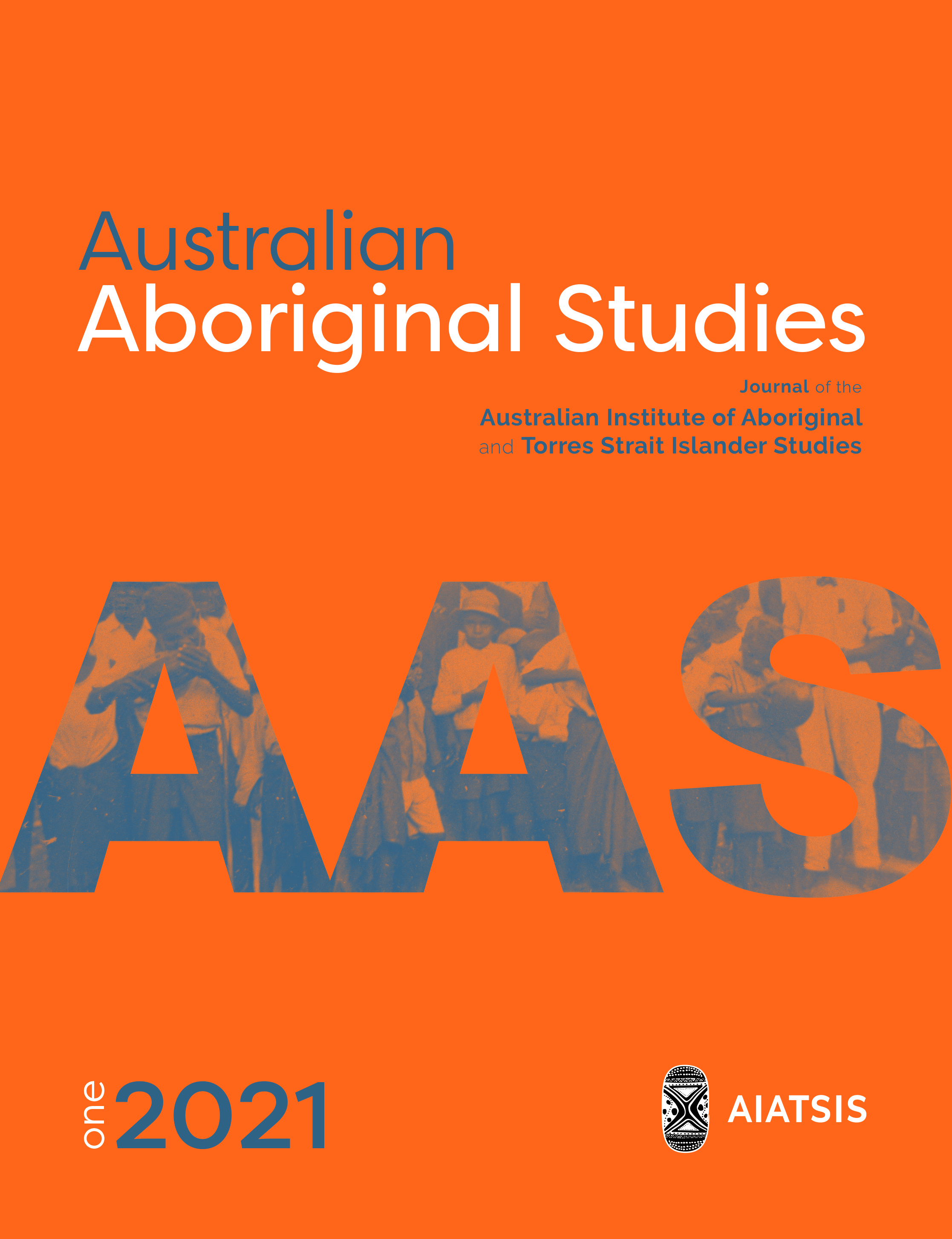Australian Aboriginal Studies: Issue 1, 2021
Major articles
Data for action: The Family and Community Safety for Aboriginal and Torres Strait Islander peoples (FaCtS) Study
Katherine Thurber, Emily Colonna, Shavaun Wells, Minette Salmon, Bianca Calabria, Anna Olsen, Jill Guthrie, Makayla-May Brinckley, Rubijayne Cohen, Naomi Priest, Emily Banks, Matthew Gray, and Raymond Lovett, on behalf of the FaCtS Team
Abstract: This paper describes the development, methodology, methods and final data resource for the Family and Community Safety for Aboriginal and Torres Strait Islander Peoples (FaCtS) Study. Improving family and community safety is a priority for Aboriginal and Torres Strait Islander communities and organisations, and governments, but to date insufficient appropriate evidence has underpinned action. The FaCtS Study aims to improve understanding of family and community safety and violence in Aboriginal and Torres Strait Islander communities.
In the Aboriginal and Torres Strait Islander-led and governed study, 18 communities covering very remote, remote, regional and urban areas self-nominated to participate. Although a single approach will not work for the diverse range of communities, FaCtS data provide valuable insight to inform a broad range of effective community, policy and service responses to support family and community safety and to improve service provision for those exposed to or involved in violence. The study also serves as an exemplar of ethical research, demonstrating the application of community-based action research principles, reciprocity and local data ownership. To maximise the benefit that can come from the study, anonymised data will be available to communities, academics, services and government agencies for approved research purposes under Indigenous data governance arrangements.
Aboriginal Redfern then and now: between the symbolic and the real
Heidi Norman
Redfern is an inner-city Sydney suburb readily identified as an urban Aboriginal centre where pan-Aboriginal liberation politics of the 1970s fluoresced, where Aboriginal self-determination in the form of services — legal, medical, women’s and children — began, where land rights were recognised, where culture was celebrated and revived through theatre productions, and where people, many just freed from institutional life, recovered a sense of belonging. It must have been a thrilling and exciting time of liberation and becoming, save for the surrounding hostile society and its police force. Yet Aboriginal people’s engagement in the local economy is rarely canvassed in the history of this significant place, nor how the changing local economy informed the apparent evaporation of optimism for community housing by the late 1980s. This paper therefore contributes an analysis of a significant urban and political Indigenous place shaped by material conditions and an abiding desire to maintain important aspects of cultural traditions. It contributes an understanding of Aboriginal worlds in Redfern, with particular emphasis on how local economic conditions made life possible for Aboriginal people and how, in turn, Aboriginal engagement in the market economy was shaped by transformation amidst historical inheritances.
‘Pride of Yarrabah’: Yarrabah’s annual sports days as historical Aboriginal spaces
Gary Osmond
Annual sports days have featured in Yarrabah in North Queensland since the Church of England established the mission in 1892. From at least 1917, sports have been held to commemorate the mission’s birthday and are tinged with religious associations. The foundation sports day competitions include a mixture of footraces, quaint recreational activities and traditional Aboriginal events such as fire lighting and spear throwing. Imposed on inmates of the mission as a colonial event, they are now embraced by residents and celebrated as the ‘Pride of Yarrabah’. The literature on religious missions and Indigenous people in Australia and globally reveals degrees of agency exercised by mission inmates and their historical appropriation of religion and associated activities. Drawing on voices of Yarrabah residents and on the empirical mission record, this paper explores the annual foundation sports days as historical Aboriginal spaces and argues that community ownership and appropriation of this mission-imposed cultural event speaks to processes of Aboriginal cultural adaptation to colonialism.
Archiving First Nations media: the race to save community media and cultural collections
Daniel Featherstone, Claire Stuchbery, Sharon Huebner, Lyndon Ormond-Parker, Andrew Dodd
Since the 1970s First Nations media organisations have been established across remote, regional and urban Australia, and have been broadcasting and producing media in and for their local communities. Many of the resulting community-managed audiovisual collections have yet to be digitised or archived and are often stored in substandard conditions. With UNESCO’s deadline of 2025 for digitisation of analogue media rapidly approaching, these rich social and cultural heritage collections are at high risk of being lost.
Since 2013 First Nations Media Australia (FNMA, formerly Indigenous Remote Communications Association) has worked closely with member organisations and national collection agencies to develop a First Nations Media Archiving Strategy and to support community organisations develop the capacity to manage their collections according to best practice. FNMA is committed to keeping strong community control of media collections and recordings, and believes that the relationship between media production and access to archived recordings is intrinsically linked to the processes of self-determination and to social, cultural and economic sustainability and benefit. This paper explores the ways in which on-country archiving work enables local decision-making processes, which are considered critical to future collection access and use.
The paper discusses how First Nations media organisations are often hampered by a lack of funding for the equipment, software and training needed for preservation work and ongoing management of community collections.
Book reviews
Robert Malcolm Ward Dixon
Australia’s original languages: an introduction
(Reviewed by Alan Rumsey)
Samia Khatun
Australianama: the South Asian odyssey in Australia
(Reviewed by Tandee Wang)
